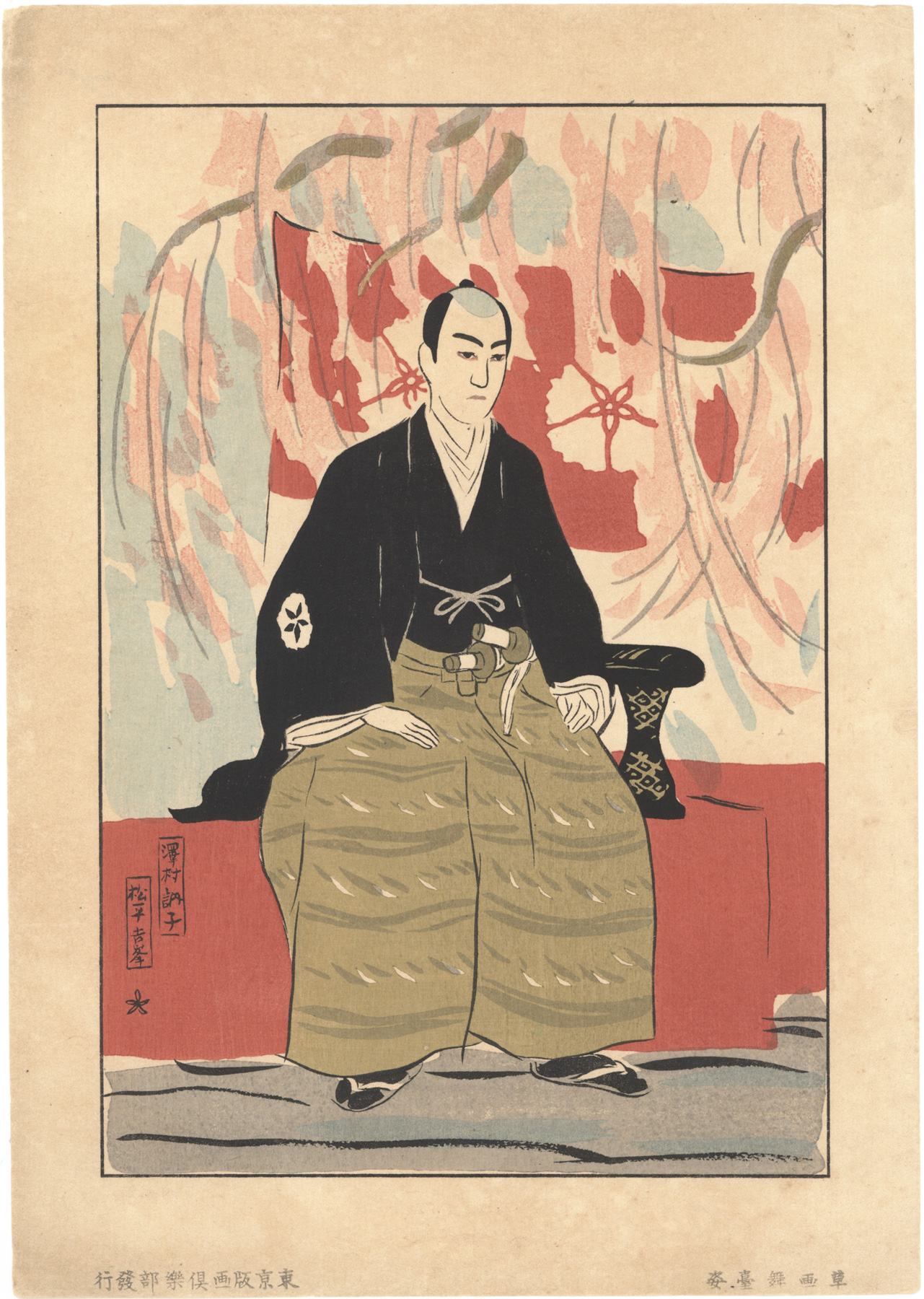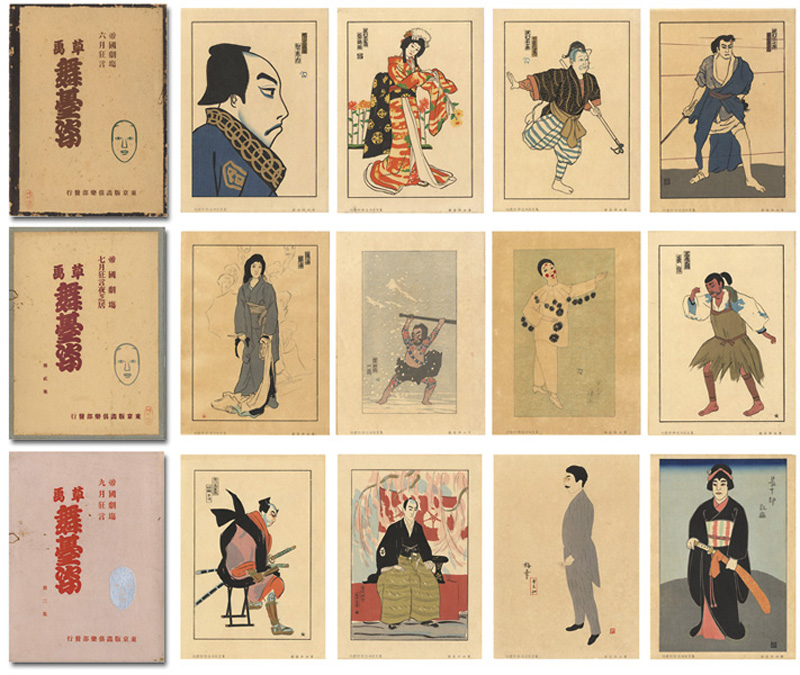About This Print
Source: Guide to Modern Japanese Woodblock Prints: 1900-1975, Helen Merritt, University of Hawaii Press, 1992, p. 123.
Yamamoto Kanae also [in addition to Ishii Hakutei (1882-1958)] tried to revitalize ukiyo-e. He focused on actor prints, however, rather than bijin-ga. In order to have anorganization to produce and distribute the prints he created the Tokyo PrintClub in 1911. He presented the club in an advertisement in Hōsun which saidthat the club would offer creative criticism of hanga exhibitions and publish a monthly magazine. As it turned out,since most of the Hōsun group hadleft Tokyo, Yamamoto Kanae and Sakamoto Hanjirō were the only members of theclub. Kanae’s first step was to photograph actors in performance. He andSakamoto then drew actors from life at the new Imperial Theater which hadrecently opened on the moat opposite the Imperial Palace. Edward Seidenstickerhas described the Imperial Theater where Hanjirō and Kanae sketched as a “highlyGallic structure of marble, hung with tapestries and provided with seventeenhundred Western-style seats.”The prints in their final form were in three sets, each consistingof two prints by Yamamoto Kanae and two by Sakamoto Hanjirō. They werepublished for the performances in June, July and September of 1911 with thetitle Sōga butai sugata (Stage FigureSketches). Each set, in a folder which gave the name of the series and thenames of the artists on the front in French and on the back in Japanese, soldfor thirty sen. Kanae promised that figures from thirty-four new plays in Tokyowould be issued from time to time, but only twelve prints were produced beforethey abandoned the project.
The prints represent the leading actors of the day in roles in kyōgen or plays. Except for one largehead by Kanae, all are full-length figures. Some have slight background detail,but in each print the focus is primarily on the actor and costume. In a letterto Nagahara Kōtarō, his former teacher at the Tokyo School of Fine Arts, Kanaecommented that Nagahara might laugh bitterly at the prints, but he himself hadbeen dissatisfied with the usual “art-type” postcards and tried to make money,unsuccessfully as it turned out, by appealing to the stylish audience of themodern plays.
IchikawaKomazō as Anewa Heiji is representative ofSakamoto Hanjirō’s prints in the Sōgabutai sugata series. As in ukiyo-e,the name and role of the actor are in cartouches, and the figure and backgroundare presented as large flat areas without shading. The only suggestions ofdepth come from the placement of the feet, the swords behind the body, and thelegs on the stool.
The planning of these prints was a significant step in Hanjirō’scareer because prior to this series he had worked entirely in the Westernmanner as he had learned as a student in the institute of Taiheiyōgaka… It wasnot until the Sōga butai sugataseries that he first worked with flat areas of color and discovered theapproach to both painting and prints that was to characterize his mature work.
Print Details
| IHL Catalog | #2276 |
| Title | Sawamura Tosshi in the role of Matsudaira Yoshimine [reading of the character being played 松平吉峯 is unconfirmed) 澤村訥子 松平吉峯 |
| Series | Sketches from the Stage (also seen translated as Stage Figure Sketches) 草画舞臺姿 [草画舞台姿] Sōga-butai sugata  |
| Artist | Sakamoto Hanjirō (1882-1969) |
| Signature | unsigned |
| Seal |  |
| Publication Date | 1911 |
| Edition | first and only |
| Publisher |  |
| Carver | Yamamoto Kanae 山本鼎 (1882-1946) |
| Printer | Yamamoto Kanae 山本鼎 (1882-1946) |
| Impression | excellent |
| Colors | excellent |
| Condition | good - toning throughout |
| Genre | sosaku hanga (creative print); moku hanga |
| Miscellaneous | |
| Format | chuban |
| H x W Paper | 10 3/8 x 7 5/16 in. (26.4 x 18.6 cm) |
| H x W Image | 8 11/16 x 5 7/8 in. (22.1 x 14.9 cm) |
| Collections This Print | Waseda University Cultural Resource Database 201-430 and 201-437; Artizon Museum 24858, - Chuo City, Tokyo (image not shown) |
| Reference Literature |



